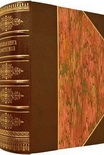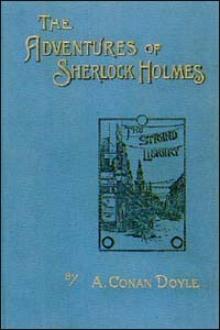My Autobiography, Charles Chaplin [books to read in your 20s .TXT] 📗

- Author: Charles Chaplin
Book online «My Autobiography, Charles Chaplin [books to read in your 20s .TXT] 📗». Author Charles Chaplin
The day after the tragedy I was to have met the late Prime Minister at an official reception, which was, of course, called off.
Sydney declared that the murder was all a part of the mystery and that in some way we were involved. Said he: ‘It is more than a coincidence that six assassins murdered the Prime Minister and that six men came into the restaurant that night while we were dining.’
It was not until Hugh Byas had written his most interesting and informative book Government by Assassination, published by Alfred A. Knopf, that the whole mystery, as far as I was involved, was clarified. It appears that the society called The Black Dragon was active at that moment, and it was they who had demanded that I bow to the palace. I quote from Hugh Byas’s book the following account of the trial of those who had assassinated the Prime Minister:
Lieutenant Seishi Koga, naval ringleader of the plot, afterwards told the court martial that the conspirators had discussed a plan to bring about martial law by bombing the House of Representatives. Civilians who could easily get passes were to throw bombs from the public gallery while young officers waited at the doors to kill the members as they rushed out. Another plan, which might be too grotesque for credence if it had not been told in court, proposed the killing of Charles Chaplin, then visiting Japan. The Prime Minister invited Mr Chaplin to a tea and the young officers considered a scheme for raiding the official residence while the party was in progress.
JUDGE: What was the significance of killing Chaplin?
KOGA: Chaplin is a popular figure in the United States and the darling of the capitalist class. We believed that killing him would causea a war with America, and thus we could kill two birds with a single stone.
JUDGE: Then why did you give up your splendid plan?
KOGA: Because the newspapers later reported that the projected reception was still uncertain.
JUDGE: What was the motive of planning to attack the official residence of the Prime Minister?
KOGA: It was to overthrow the Premier, who was also the president of a political party; in other words to overthrow the very centre of government.
JUDGE: Did you intend to kill the Premier?
KOGA: Yes, I did. However, I had no personal grudge against him.
The same prisoner said that the plan to kill Chaplin was abandoned because ‘it was disputed whether it was advisable to kill the comedian on the slight chance that it might bring about war with the United States and increase the power of the military’.
I can imagine the assassins having carried out their plan, then discovering that I was not an American but an Englishman – ‘Oh, so sorry!’
However, it was not all mystery and unpleasantness in Japan; for the most part I had an interesting time there. The Kabuki theatre was a pleasure that went beyond my expectations. The Kabuki is not a purely formal theatre, but a mixture of the ancient and modern. An actor’s virtuosity is the most important consideration, and the play is merely the material with which he performs. According to our Western standards their technique has sharp limitations. Realism is ignored where it cannot be effectively achieved. For instance, we occidentals cannot stage a sword fight without a touch of the absurd, for no matter how fierce the fighting one detects a modicum of caution. The Japanese on the other hand make no pretence of realism. They fight at a distance apart from each other, making sweeping panache gestures with their swords, one attempting to cut off the head of his opponent, the other slashing at his opponent’s legs. Each in his own sphere jumps, dances and pirouettes. It is like ballet. The combat is impressionistic, terminating in a posture of victor and vanquished. From this impressionism the actors merge into realism during the death scene.
Irony is the theme of many of their plays. I saw what was comparable to Romeo and Juliet, a drama of two young lovers whose marriage is opposed by their parents. It was performed on a revolving stage, which the Japanese have used for three hundred years. The first scene was the interior of the bridal chamber showing the young couple just married. During the act, couriers intercede with the parents for the young lovers, who are hoping there may be a reconciliation. But tradition is too strong. The parents are adamant. So the lovers decide to commit suicide in the traditional Japanese way, each one bestrewing a carpet of flower petals upon which to die; the bridegroom to kill his bride first, then to fall upon his sword.
The comments of the lovers, as they scatter flower petals on the floor preparing for death, created laughter from the audience. My interpreter told me that the humour was ironic in such lines as: ‘To live after such a night of love would be anti-climax.’ For ten minutes they continue such ironic banter. Then the bride kneels on her mat of flowers, which is at a distance away from his, and bares her throat; and as the bridegroom draws his sword and slowly walks towards her, the revolving stage begins to move, and before the point of his sword reaches his young wife’s throat, the scene turns out of sight of the audience and shows the exterior of the house, drenched in moonlight. The audience sits through what seems an interminable silence. Eventually, voices are heard approaching. They are friends of the dead couple come to bring them the happy news that their parents have forgiven them. They are tipsy and argue about which of them should break the news. Then they commence to serenade them and, getting no response, they beat on the door.
‘Don’t disturb them,’ says one; ‘they’re either asleep or too busy.’ So they go on their way, continuing their serenade, accompanied by a tick-tock, boxlike sound, signalling the end





Comments (0)